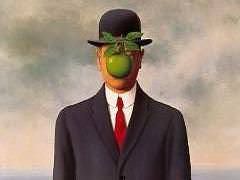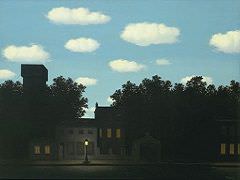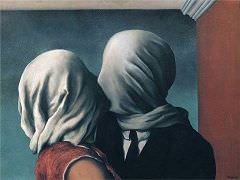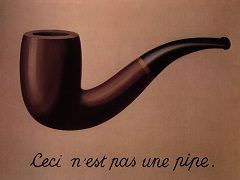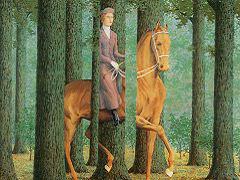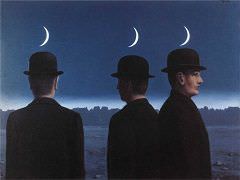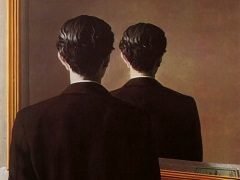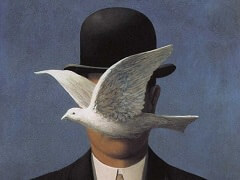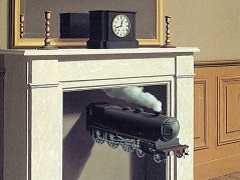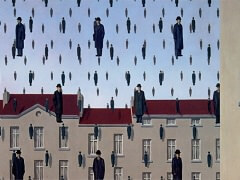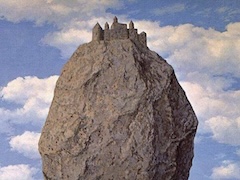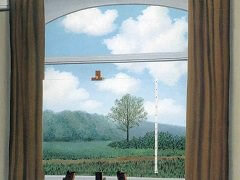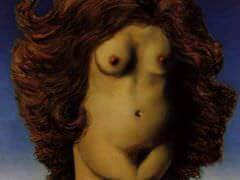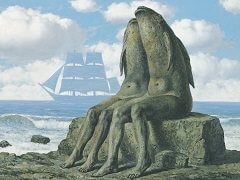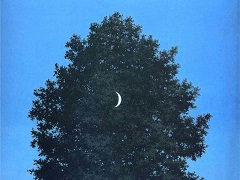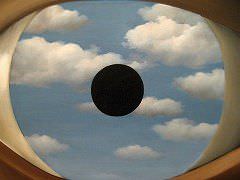The Red Model, 1934 by Rene Magritte
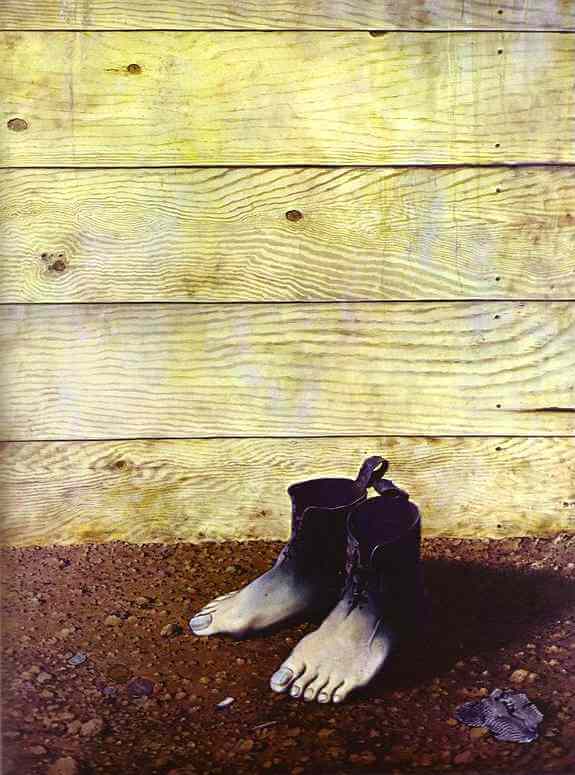
With his repeated motif of human feet in place of shoes, Magritte sees the treachery of emotions in the A Pair of Shoes painted by Van Gogh.
The uncanny affinity between the feet and the shoes drives our curiosity and undermines our habitual conceptual polarity: feet/shoe, human/non-human, civilization/wilderness, inside/outside. To combine human feet with leather to form a new object is an expression and demonstration of hybridization and monstrosity. The frightening reversal reveals a monstrous habit when the "outside" becomes "inside." The container (boot) contains the contained - the privileged human-flesh - foot. Then, with the backdrop of the ground, one would recognize the "foot" of the boot as a stranded "thing."
The awareness of the "thingness" of foot and the hybridity of such combination evoke a bizarre feeling which could be designated as "monstrous." The monstrous creature, like Medusa, gazes at the viewer and freezes his sight. The monstrosity encompasses three levels of meaning in my understanding: monstrous being, monstrosity of Being (and monstrosity in being) and becoming monstrous. For "monstrous being,"
The aesthetic perception or construction of a bizarre sight (site). "Monstrosity of Being" designates the ontological grasping of an alien world that belongs to the realm of "infinity" and "totality", i.e. a holistic grasping of the infinity of being and of the totality of being. "Becoming monstrous" designates the self's ethical encounter with the other. In the ethical sense, what is monstrous does not lie in the naming of an alien situation, but in the "becoming," i.e., the tension derived from the process of encountering the other, of which the "life and death struggle for recognition" envisioned by Hegel is the most drastic scenario.

